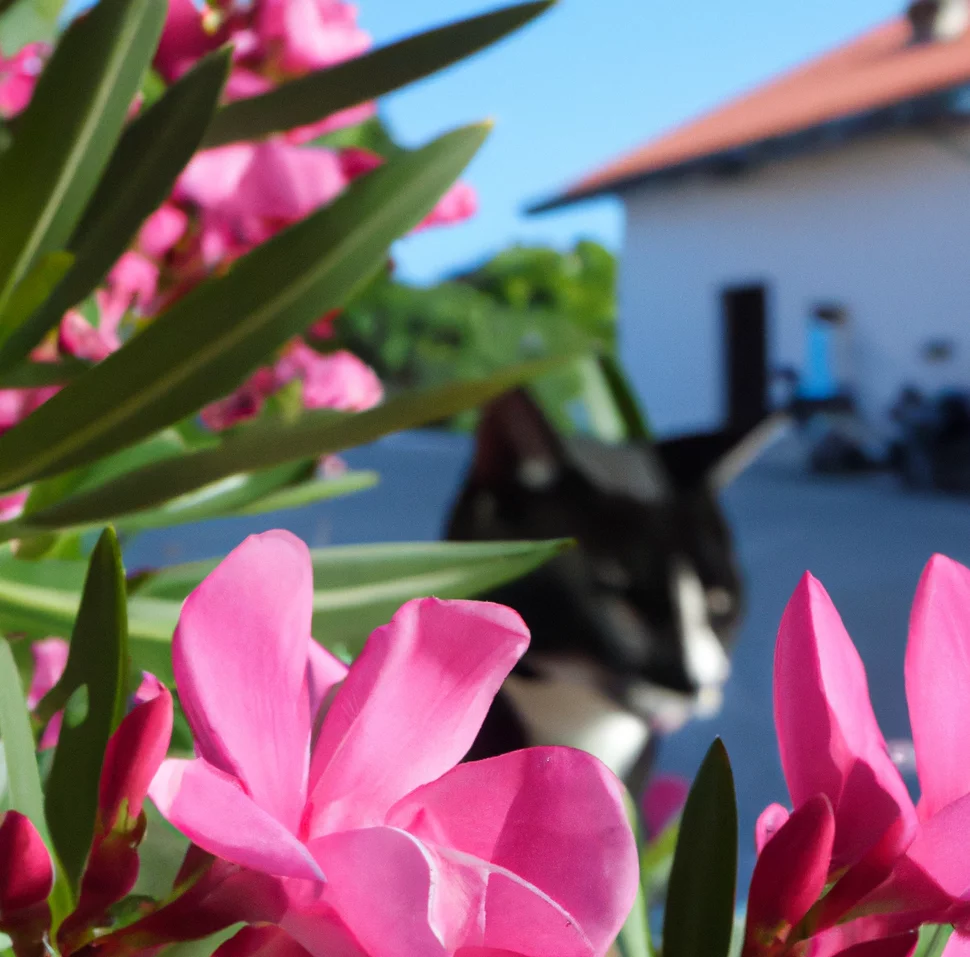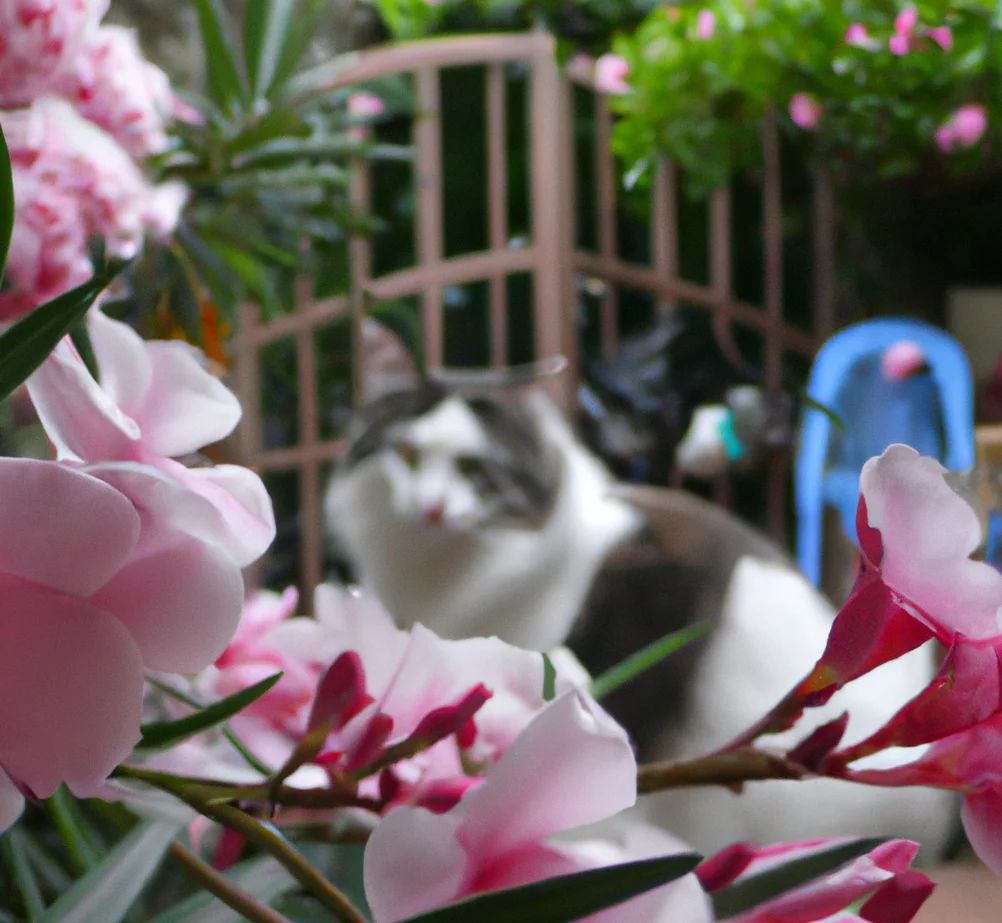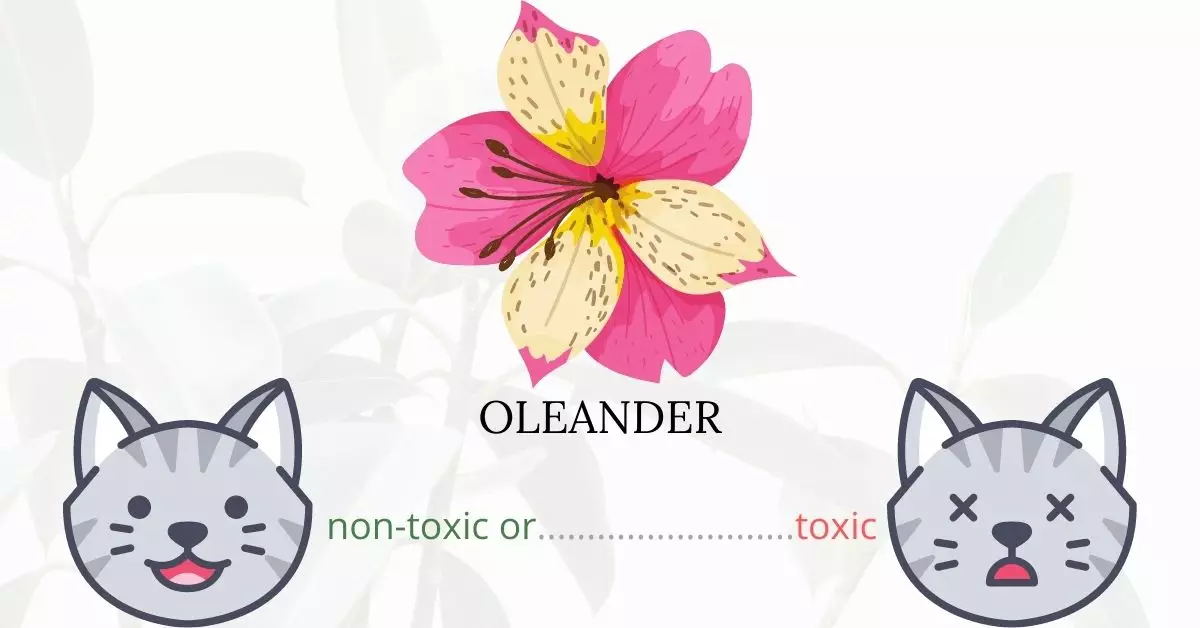Yes, oleander is highly toxic to cats. Oleander, also commonly referred to as rosebay, is an evergreen shrub known for its poisonous properties. Consumption of even a small amount, whether it’s a few leaves, a twig, or water tainted with oleander, can be lethal for cats. The plant contains toxic components called cardiac glycosides, which interfere with the sodium/potassium ATPase pump. This interference results in hyperkalemia and an increase in intracellular calcium, leading to issues like premature depolarization, heart irritability, and arrhythmias in cats. Other associated conditions, such as hemoconcentration, prerenal azotemia, and electrolyte abnormalities, may arise due to gastrointestinal effects or poor perfusion resulting from the severe nature of the symptoms.
This article was crafted in collaboration with a team of experienced DVMs (doctors of veterinary medicine). Their invaluable insights and expertise ensure that we provide you with accurate and current information regarding the potential risks of various plants, focusing on Oleander in this case. Additionally, we have thoroughly researched high-authority websites such as ASPCA and PetMD to further substantiate the information presented.
Clinical Signs of Oleander Poisoning in Cats

Oleander, despite its ornamental beauty, is a plant fraught with potent toxins. If a cat comes into contact with, smells, or consumes even a tiny portion of this plant, it may manifest a range of clinical symptoms, often within the first three hours, sometimes immediately. Here’s a detailed look at the common clinical signs and the reasons behind their occurrence:
- Drooling: This is an immediate response to the irritant nature of the plant. As the body tries to rid itself of the toxins, increased salivation or drooling is commonly observed.
- Vomiting and Diarrhea: The digestive system reacts adversely to the ingestion of the toxic components. These symptoms are the body’s attempt to expel the toxins.
- Arrhythmias, Bradycardia, Tachycardia, and Premature Ventricular Contractions: These heart-related symptoms occur because of the cardiac glycosides in oleander. They can interfere with the heart’s electrical activity, leading to various rhythm disturbances.
- Blood Pressure Irregularities: The heart’s compromised function, combined with the effect of the toxins on the vascular system, can lead to fluctuations in blood pressure.
- Lethargy and Depression: The overall systemic effects of the toxin can cause a decrease in energy and a subdued demeanor in affected cats.
- Ataxia: This refers to a lack of muscle coordination, caused by the impact of the toxins on the nervous system.
- Tremors and Seizures: These neurological signs stem from the toxin’s effect on the brain and the central nervous system.
- Dehydration: Prolonged vomiting and diarrhea can lead to a significant loss of fluids, resulting in dehydration.
- Shock: As the body struggles to cope with the wide-ranging impacts of the toxins, it might go into a state of shock, characterized by a drastic fall in blood pressure and impaired organ function.
- Death: In severe cases, if the cat is not treated promptly, the cumulative effects of the poisoning can sadly lead to fatality.
If you suspect that your cat has come into contact with or ingested Oleander, it is essential to seek veterinary care immediately.
First Aid and Treatment of Oleander Poisoning in Cats

The symptoms that have developed in the cat will determine the treatment that will be given. All efforts will be made by the veterinarian to stabilize the cat’s condition.
The vet will use hydrogen peroxide emesis, gastric lavage, or stomach pumping to empty the stomach and eliminate any remaining plant material before it is digested. If the cat becomes dehydrated, saline and electrolytes will be administered intravenously
In case of arrhythmias, it can be treated with a range of medications. Potassium chloride, Procainamide, dipotassium EDTA, atropine, FDP, or lidocaine are some of the medications that may be prescribed by the veterinarian.
Recovery from Oleander Poisoning in Cats

If the cat ingested very small amounts of oleander, the prognosis is uncertain, but recovery is possible. The cat’s heart may be permanently damaged as a result of the poisoning incident. Death is possible if a large amount of oleander is consumed. Within 24 hours, the cat may be paralyzed, go into a coma, and die.
Prevention of Oleander Poisoning in Cats
If you have oleanders in your yards, it is best to remove them immediately. Keep your cats indoors so you can keep an eye on them better and lessen the risk of exposure to oleanders and other toxic plants that may be growing in your neighborhood.
If you love plants but have cats at home, check out these lists:





